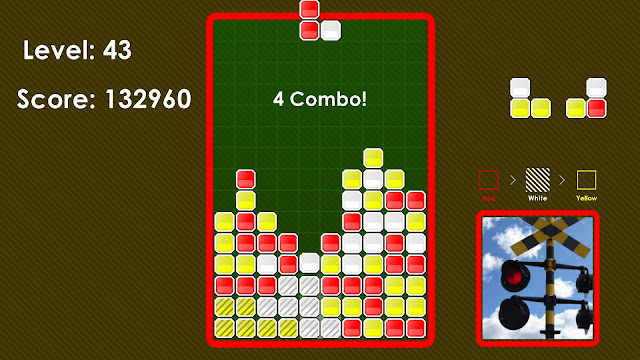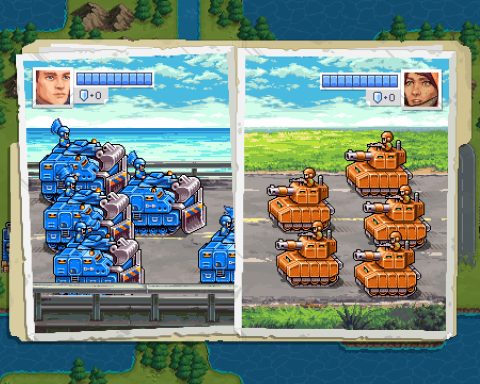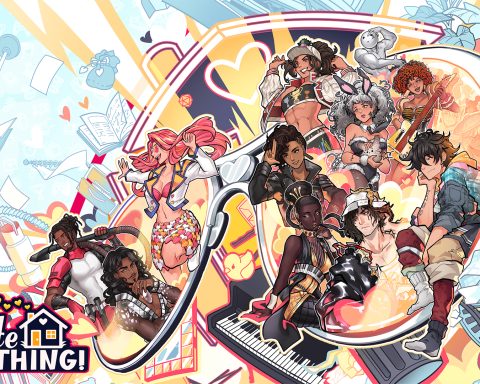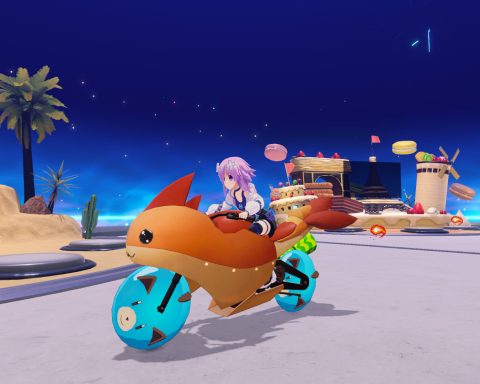Red White Yellow is a useful game because it highlights some realities about game design – sometimes some of the simplest elements that melt right into the background really do help a game shine. Red White Yellow is so closely inspired by Lumines, and yet not in the same ballpark as far as quality is concerned. It’s like those Tetris clones that add one additional “new” shape of block. It might be enough to distinguish the two experiences, but the changes inevitably upset the balance of the game and make people wish they were just playing the original instead.
Red White Yellow works as follows: blocks drop down from the screen to land in a Tetris-like play field, and come in three colours. Your goal is to connect six blocks of the same colour, and you need to do that in order. So you need to connect at least six red blocks, and then six white blocks, and then six yellow blocks, before again connecting red blocks. If your current goal is to match up white blocks, then forming a chain of six red blocks isn’t going to help you.
This is how the scoring and combo system works. Once you match up the red blocks, they disappear, and a bar of music starts. You then have that length of time (a single bar of music), to create a white chain. If you do so, the combo tally will increase and you’ll get another bar of music to form a yellow chain. Then it’s back to red and so on. This is all you do in Red White Yellow, and while it works, it comes with some limitations.
For one thing, the game’s source of inspiration, Lumines, has a scrolling bar that moves across the playfield in time with the music, giving you a visual indication of where the music’s at, and an extra tool to plan some strategy when aiming for really high scores. It’s such a simple, fine difference between the two, but it does make the world of difference. Lumines is a puzzle rhythm game, in which the rhythm itself is baked into the mechanics of the game. Red White Yellow, meanwhile, wants to be a music rhythm game, but the music isn’t a mechanical feature at all. It’s a reward for playing well and placing blocks quickly enough to set up combos that keep the music going. It’s certainly challenging and will test your ability to quickly interpret visual information to most effectively drop blocks into the playfield quickly. It tests the twitch responses, in other words. But it’s superficial and, ultimately, quite shallow, because the thing it pretends to be turns out to be a pastiche.
Speaking of pastiche, there’s a real effort to try and make this game have the same techno-cool vibe as Lumines, but it gets its aesthetics wrong. The most distracting thing is a little picture in the corner that changes with every successful match. It quickly becomes distracting, because it does actively try to draw the eye, and as the speed and intensity increases, that momentary and largely involuntary split focus can be costly. Most egregious of all, however, is that the developer hasn’t considered the impact of having their soundbites end so suddenly. The moment the combo breaks in Red White Yellow, the soundscape goes almost totally silent. It can be really, really annoying to have music finish partway through, and Lumines’ developers understood that, with far more smooth transitions than Red White Yellow features.
Of course, Red White Yellow is a micro-scale project by a developer, being sold at a minimal price. It feels almost cruel to be critical of it, but this game does have flaws that undermine its very premise, and while it’s a technically proficient little puzzler, there’s already a much better-realised effort that pitches in this space, called Akihabara: Feel The Rhythm. That is, of course, if you’re not going to simply buy Lumines.
Matt S.
Editor-in-Chief
Find me on Twitter: @mattsainsb








